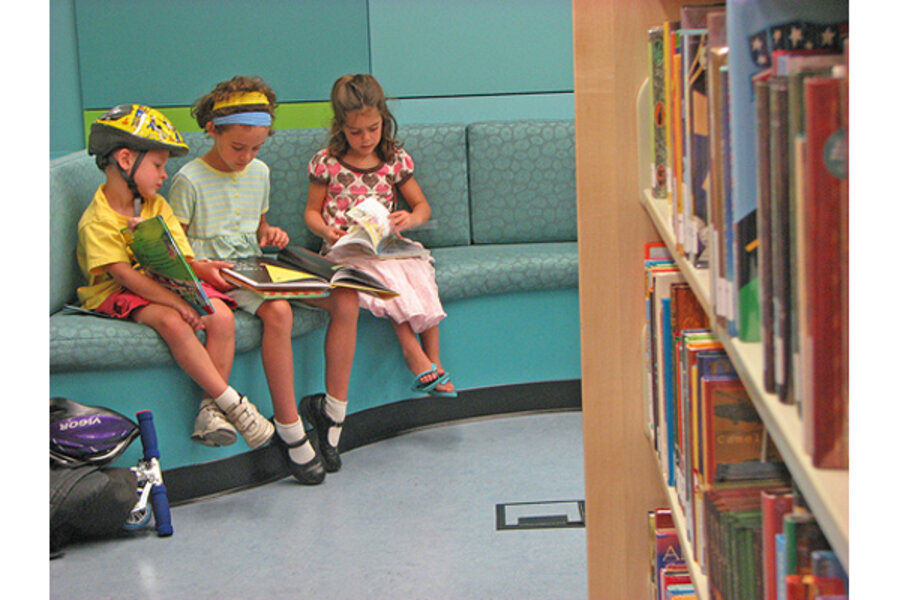Should your child be learning the art of slow reading?
Loading...
Is the Internet making us intellectually shallow? Yes, says journalist Nicholas Carr, among others. In his new book, The Shallows: What the Internet is Doing to Our Brains, Carr concludes that the Internet is changing not only what we think about (gossip, up-to-the-minute news) but how we think. “Media ... supply the stuff of thought,” he writes, and “also shape the process of thought.”
For many of today's readers – young ones in particular – reading has come to mean a rapid skim across a sea of websites, text messages, and e-mails.
Thomas Newkirk, a professor of English at the University of New Hampshire, is one of a growing number of educators concerned that – in the rush to race through more material – something essential is being lost. "You see schools where reading is turned into a race, you see kids on the stopwatch to see how many words they can read in a minute," he told the Associated Press. "That tells students a story about what reading is. It tells students to be fast is to be good."
Like the slow-eating movement, the slow-reading movement is focused on enhancing the elements of pleasure and discovery. Among other techniques, Newkirk favors a return to practices like reading aloud and memorization to help students "taste" – rather than fly by – the words that they read.
Although The Slow Book Movement was officially founded just last year in Lebanon Springs, N.Y., by novelist I. Alexander Olchowski, the concept of slow reading is not new. Nietzsche makes a reference to slow reading in the preface to his 1887 work "Daybreak." In his 1994 book, "The Gutenberg Elegies" American essayist and literary critic Sven Birkerts writes about the need for "deep reading," which he defines as "the slow and meditative possession of a book."
Carl Honore, the author of "In Praise of Slowness: How a Worldwide Movement Is Challenging the Cult of Speed" in 2004, has also had an impact on the field. Honore has explained that his conversion to a slower pace in all things began when he found himself considering reading one-minute bedtime stories to his child in order to save time.
One-minute bedtime stories? Is that really the outside limit of our patience today?
Consider this somewhat chilling excerpt from the Monitor's review today of "The Shallows":
"German researchers concluded that the average Internet user spends 10 seconds or less on a Web page. Researcher Jakob Neilson used more than 200 tiny cameras to trace human eye movement across Web pages, and found that people generally move in an 'F' shape, reading across the top and then skipping down a bit to skim a bit more. When asked, 'How do users read on the Web?' Neilson replied, 'They don’t.' ”
Given such conclusions, it might behoove all of us – parents or not – to start giving some thought to the concept of the slow read.
Marjorie Kehe is the Monitor's book editor.
Are you a proponent of slow reading? Join the Monitor's book discussion on Facebook and Twitter.


